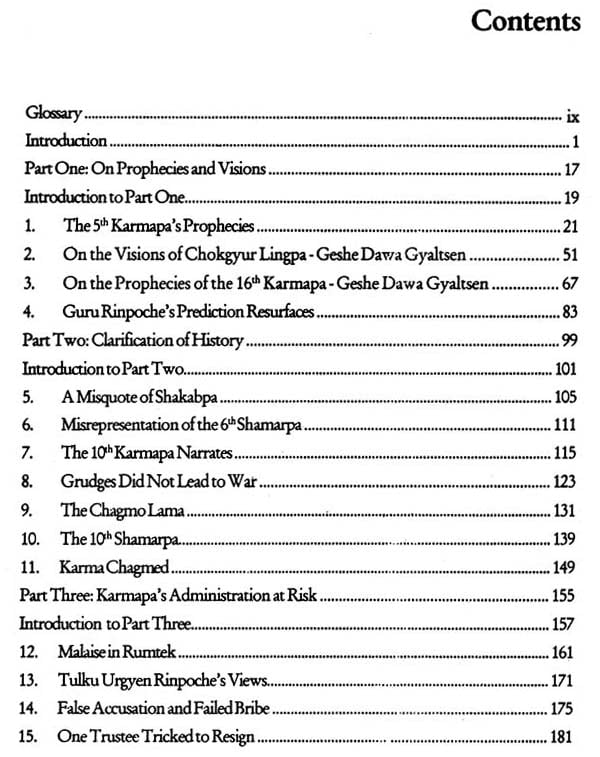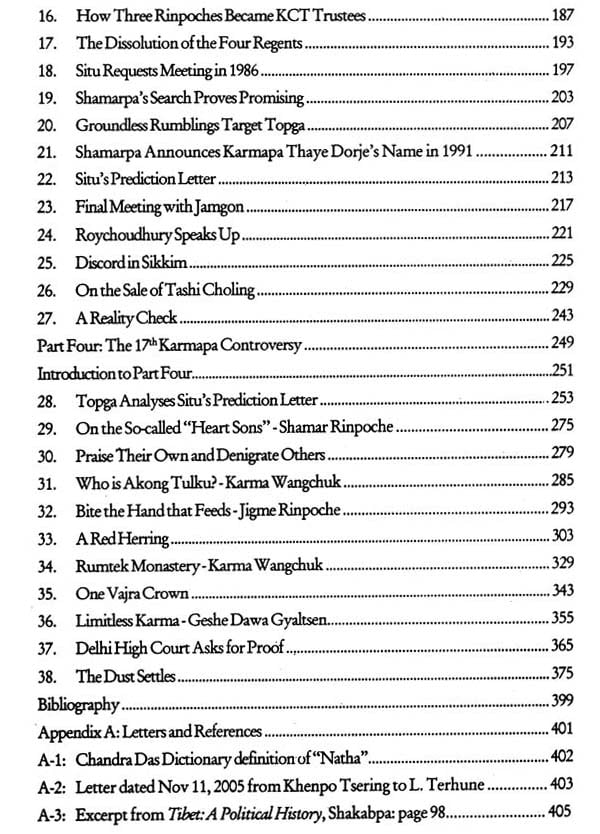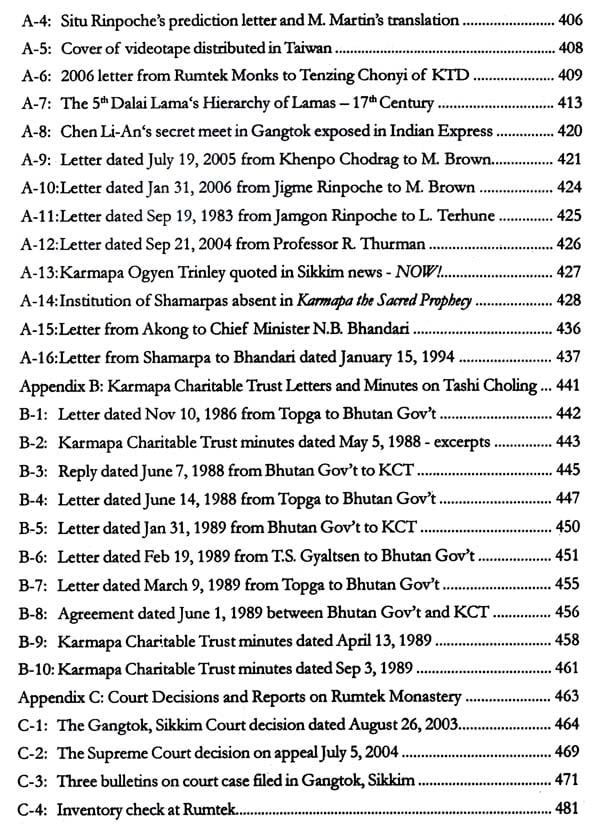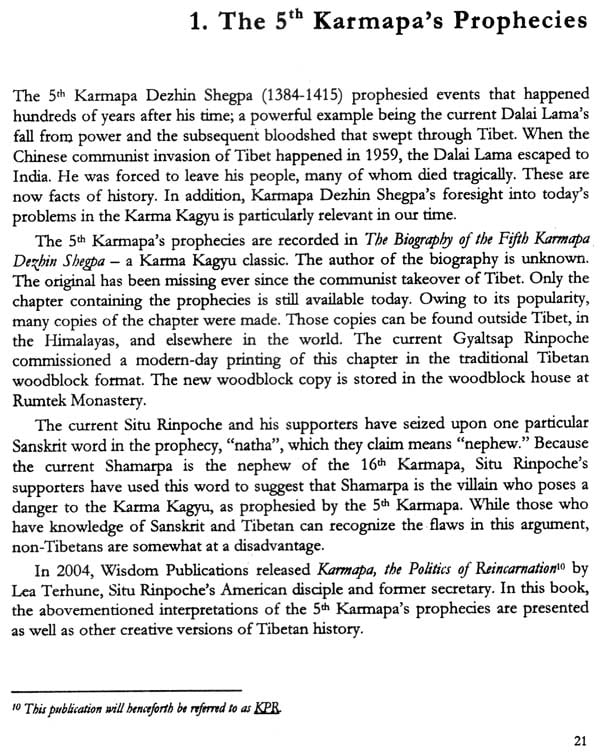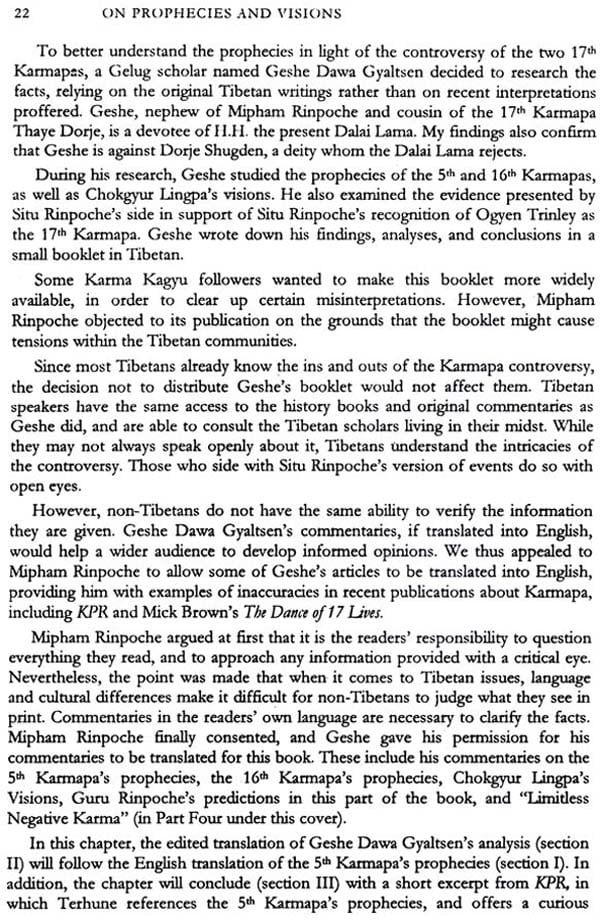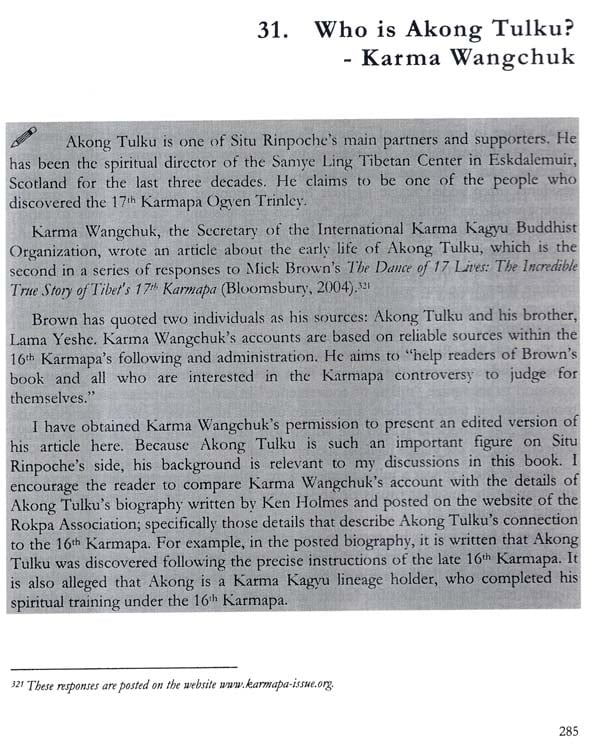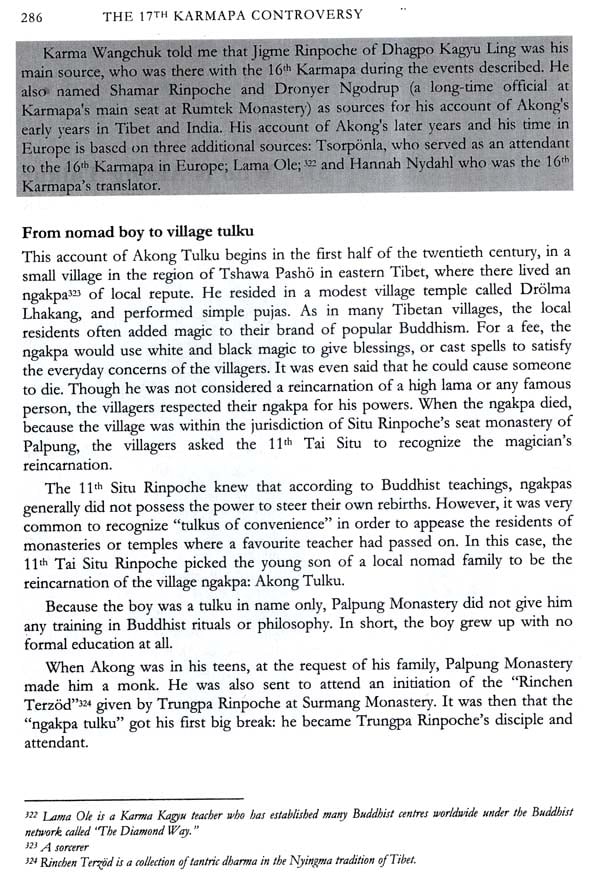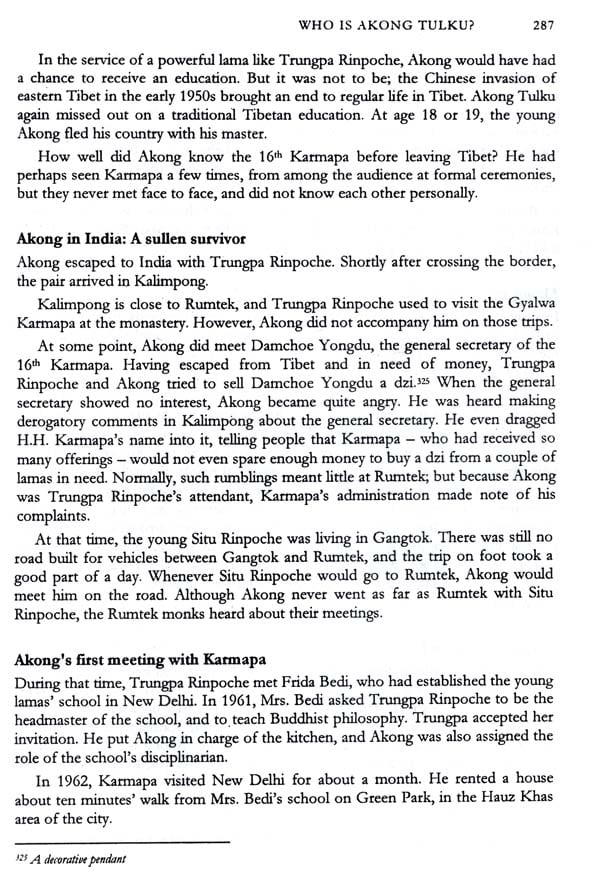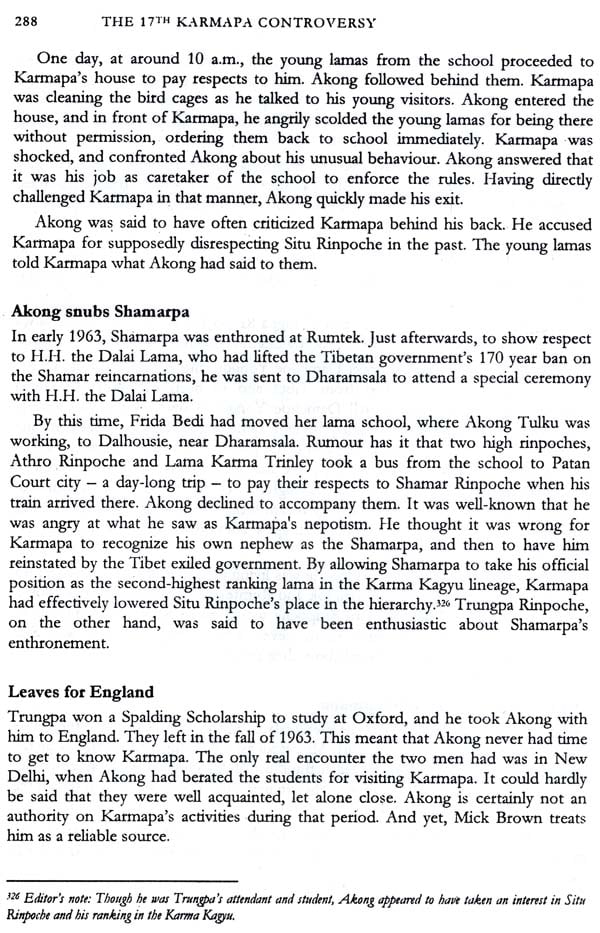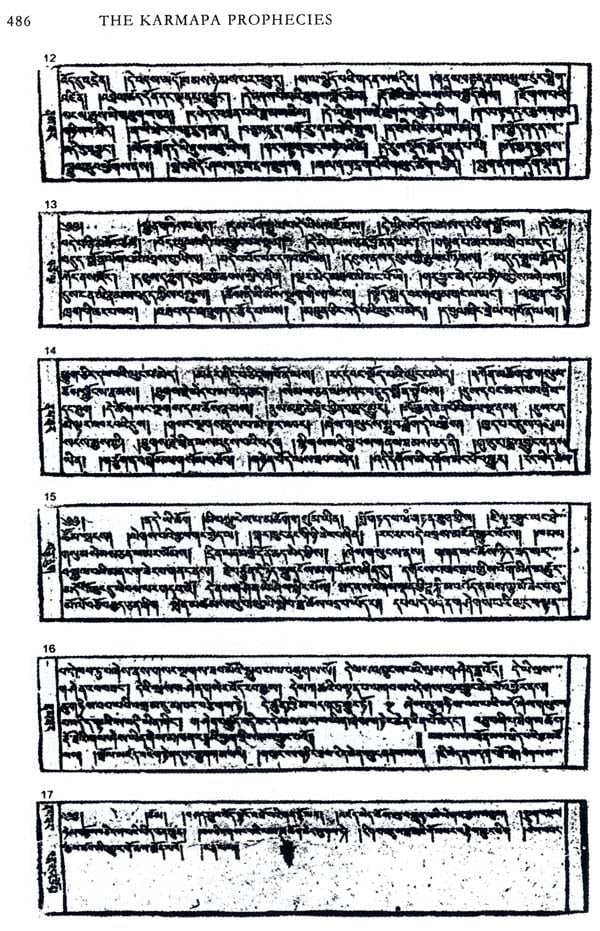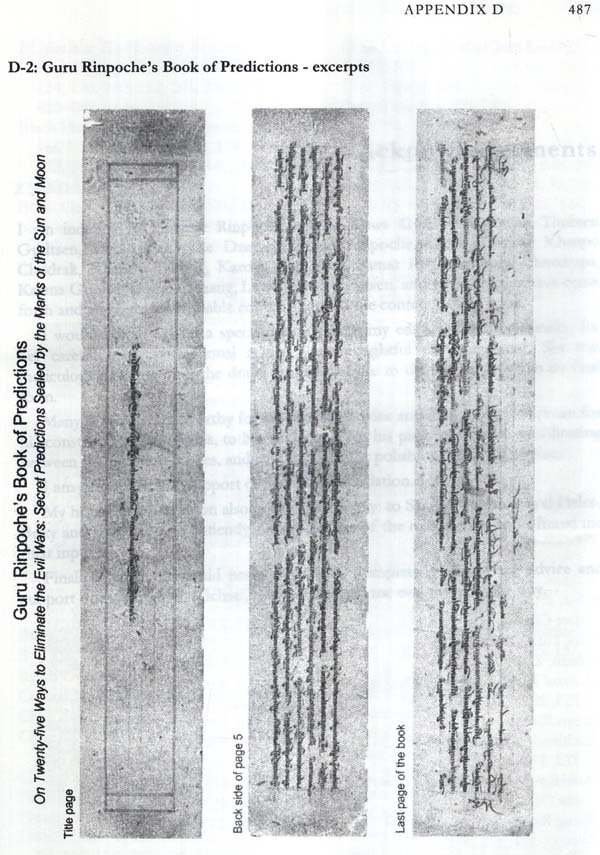
The Karmapa Prophecies
Book Specification
| Item Code: | NAZ807 |
| Author: | Sylvia Wong |
| Publisher: | MOTILAL BANARSIDASS DELHI |
| Language: | English |
| Edition: | 2010 |
| ISBN: | 9788120834804 |
| Pages: | 515 |
| Cover: | HARDCOVER |
| Other Details | 9.50 X 6.50 inch |
| Weight | 800 gm |
Book Description
Introduction
One of four major schools of Tibetan Buddhism, the Kama Kagyu lineage is a vessel of the Buddha's teachings passed down through unbroken transmissions between master and disciple over the course of 900 yews. The Indian Buddhist yogis Tilopa and Naropa were the first lineage masters of the Kagyu School of Tibetan Buddhism. It was Naropa's disciple, Marpa, who brought Buddhism to Tibet. Later, Marpa's disciple Milarepa became one of the most famous enlightened yogis of Tabet.
From Milarepa, the dharma transmissions passed to Gampopa. Gampopa's primary disciples then branched out into four main Kagyu schools, and eight Kagyu subsets. One of the four main schools is the Karma Kagyu, which was founded by the 1st Karmapa, Dusum Khyenpa. Since Dusum Khyenpa’s time, the Karma Kagyu School has continued through 16 successive Karmapas up to the present day.
The other three main Kagyu schools have ceased to exist; but their teachings still continue under eight Kagyu subsets (Drigung, Taklung, Trophu, Drugpa, Yamzang, Shugseb, Martsang, and Yerps,), and within the Karma Kagyu.
In 1959, in response to the impending communist invasion of Tibet, the 16th Karmapa, Ranajung Rigpe Dorje left Tsurphu Monastery, his seat monastery in East Tibet. He traveled with his followers to Sikkim, a northern state in India. There, he built Rumtek Monastery, which he established as his new seat outside of Tibet.
In 1961, the 16th Karmapa established a legal administrative body, or "labrang", to oversee his monasteries and assets, called the Karmapa Charitable Trust (or KCT). The labrang system is a time-honoured tradition in all schools of Tibetan Buddhism. Every spiritual teacher has the right to manage his affairs through his own autonomous administration. The 16th Karmapa personally appointed trustees to the KCT, whose duties would include managing Karmapa’s legacy in the interregnum after his death. They would also decide whom to accept as the next Karmapa.
In November of 1981, the 16th Karmapa passed away. The personally appointed trustees of the Karmapa Charitable Trust then took on the legal responsibility of managing his legacy and waited for their teacher's return as the 17th Karmapa.
The historical authentication of Karmapa
Historically, the reincarnation of a deceased spiritual master (or tulku) is confirmed by another qualified spiritual master of the same school. In the case of the Karma Kagyu, this master is usually the highest living lineage holder of the Karma Kagyu, or of another Kagyu School (such as Drugpa Kagyu, for instance). As stated, Karmapa's own labrang must also accept the new Karmapa before he can be officially enthroned.
The first master to reincarnate continuously, life after life, while keeping the same identity, was the 1st Karmapa Dusum Khyenpa (1110-1193). Before he died, the 1st Karmapa left brief oral instructions with three separate disciples concerning his next reincarnation. After his death, this first ever tulku declared himself to be the reincarnation of Dusum Khyenpa. The circumstances of his arrival corresponded to the oral instructions previously given. In addition, the 1" Karmapa's teacher Pomdrakpa saw him in a vision, and subsequently confirmed that Karmapa Dusum Khyenpa had indeed returned as Karma Pakshi, the 2nd Karmapa (1204-1283).
When the 2nd Karmapa was approaching the end of his life, he predicted that he would come back in his next life in eastern Tibet. The 3rd Karmapa, Rangjung Dorje, declared himself the reincarnation of Karma Pakshi. Thus, a precedent was established for a Karmapa reincarnate to declare himself at a very young age, as did the 5th Karmapa Dezhin Shegpa and many later Karmapas. Like the 1st Karmapa, Karma Pakshi did not leave any written description of his next rebirth, although later Karmapas would occasionally do so. However, whether instructions about his next rebirth were given orally or in writing, each reincarnated Karmapa would reveal his identity through special abilities.
Understandably, the process of recognizing a tulku can be a controversial one. An example of this is the case of the 16th Karmapa, Rangjung Rigpe Dorje.
After the death of the 15th Karmapa, a very powerful Gelugpa government minister named Lungshawa wanted to have his son recognized as the reincarnation of Karmapa. Lungshawa was dedicated to modernizing Tibet. He thought that if his son were a Karmapa, it would facilitate his plans for Tibet's north-western and eastern regions, whose inhabitants were followers of the Karma Kagyu School. H.H. the 13th Dalai Lama was subsequently persuaded to confirm Lungshawa's son as the 16th Karmapa. However, the 15th Karmapa's labrang (the Tsurphu monastery administration) did not accept this recognition, stating that "the son of this aristocrat is not the reincarnation of the 15th Gyalwa Karmapa Khachup Dorje."
The conflict was resolved by a prediction letter, which the 15th Karmapa had given to his close disciple, Jampal Tsultrim. For reasons unknown, Jampal had kept the letter secret at first, but finally revealed its contents. This led to the recognition of the authentic 16th Karmapa Rangjung Rigpe Dorje.
It is not unheard of for more than one candidate to be recognized by different spiritual masters as a potential tulku. In these cases, the late master's labrang decides which candidate to accept as the genuine reincarnation. This decision is us ually based on written or oral evidence left behind by the master, and/or special abilities exhibited by the candidate, as described in the abovementioned case.
But controversies are not always settled so easily. In 1992, two Karma Kagyu lamas — Situ and Gyaltsap Rinpoches — recognized Karmapa Ogyen Trinley as the reincarnation of the 16th Karmapa. In support of their declaration, Situ Rinpoche produced a letter allegedly written by the 16th Karmapa, which contained information about his successor.
However, two other rinpoches — the current Shamarpa and Jamgon Rinpoche —expressed their doubts about the authenticity of the prediction letter. Shamarpa asked that the letter be scientifically dated, but Situ and Gyaltsap Rinpoches refused to do so.
Instead, Situ and Gyaltsap Rinpoches obtained the cooperation of the Chinese government to have their candidate enthroned as the new Karmapa. This constituted China's first ever appointment of a tulku. They also persuaded the leader of the Tibetan 'government-in-exile, His Holiness the Dalai Lama, to confirm their candidate as the 17th Karmapa.
Shamarpa objected to this course of action, stating that any governmental involvement in ascertaining the identity of the 17th Karmapa would establish a dangerous new precedent. In his view, it would essentially mean that the power to recognize a Karmapa would henceforth be in the hands of politicians. Once that power had fallen into the political arena, the authenticity of the Karma Kagyu lineage would be lost.
To date, Situ and Gyaltsap Rinpoches have not explained why they invited the Chinese government to intervene in a religious matter. Shamarpa does not accept the two rinpoches' candidate to this day. As well, Karmapa's administration, the KCT, also refused to accept the candidate because physical evidence in Situ's prediction letter called its authenticity into question. The letterhead, the handwriting, the spelling and the many grammatical mistakes in the letter were out of line with the appearance of other writings by the 16th Karmapa.
In August of 1993, with the help of local Sikkimese state politicians and the Sikkim state police, Situ and Gyaltsap Rinpoches staged a violent takeover of Rumtek Monastery, the seat of Karmapa. Situ and Gyaltsap Rinpoches' people have occupied Rumtek ever since. Due to this incident, a legal suit has been brought against Gyaltsap Rinpoche and the Sikkim state officials so that Rumtek could be returned to its rightful administration. (Situ Rinpoche was not named in the suit because he had been banned from entering India when it was filed.)
